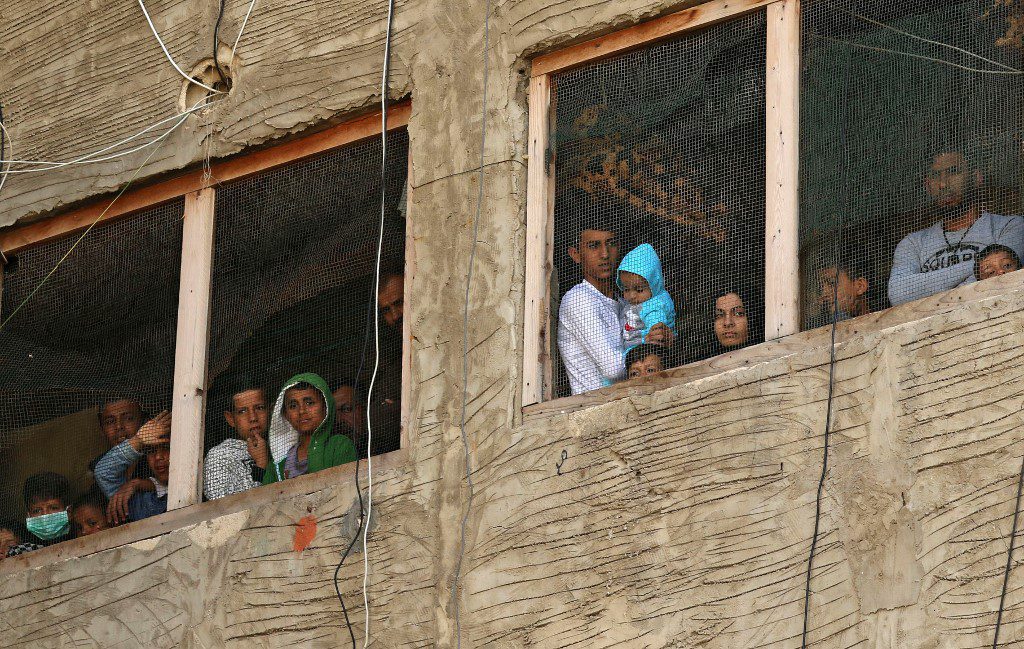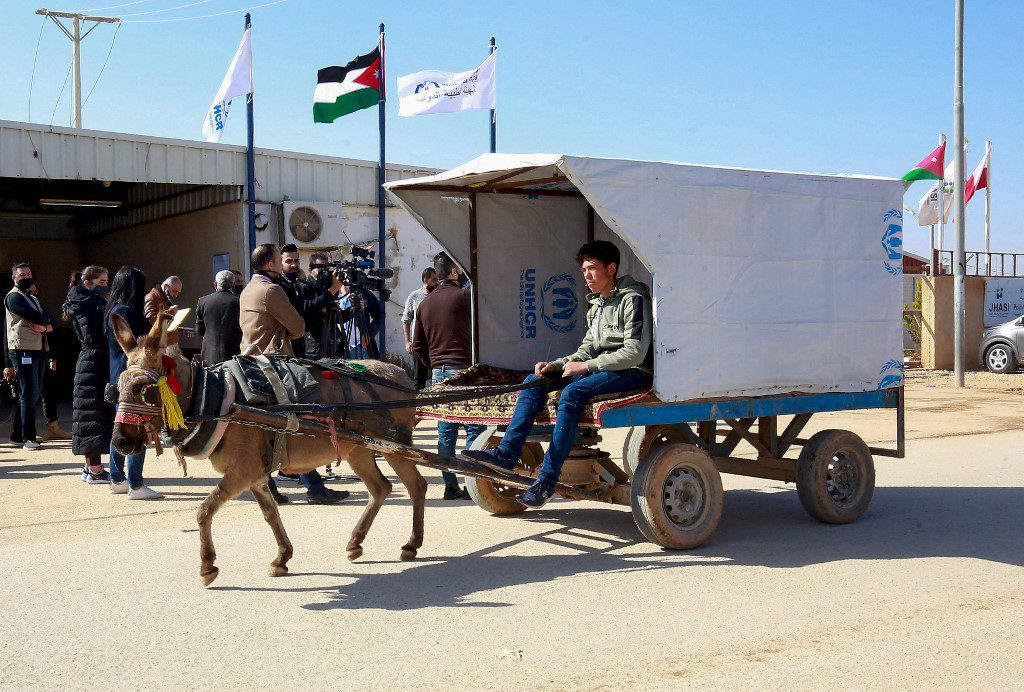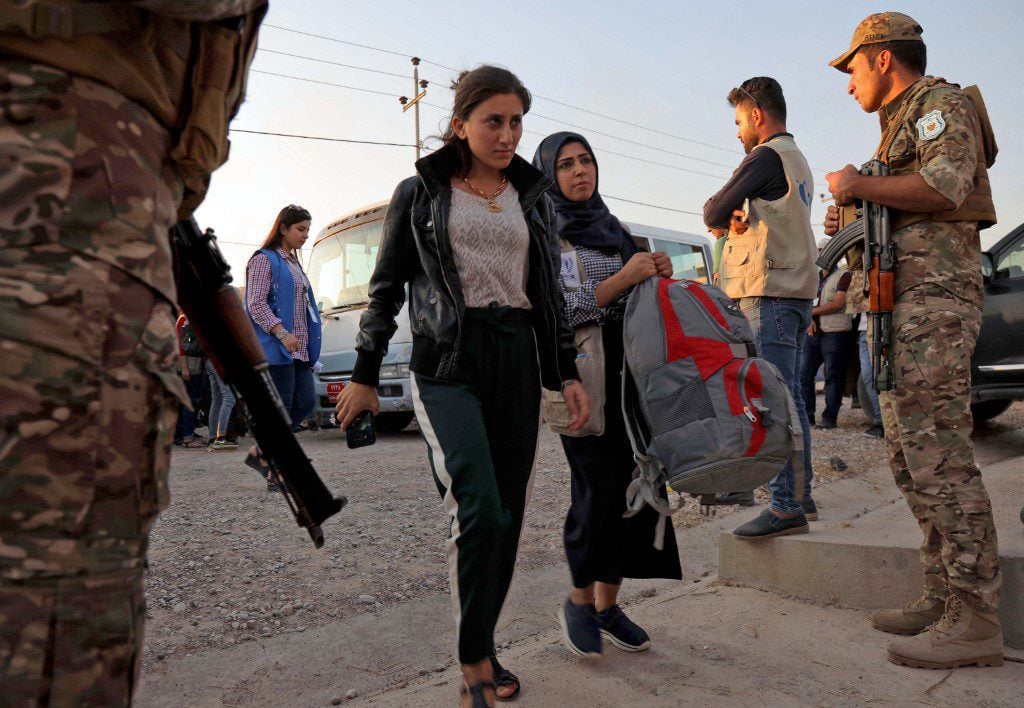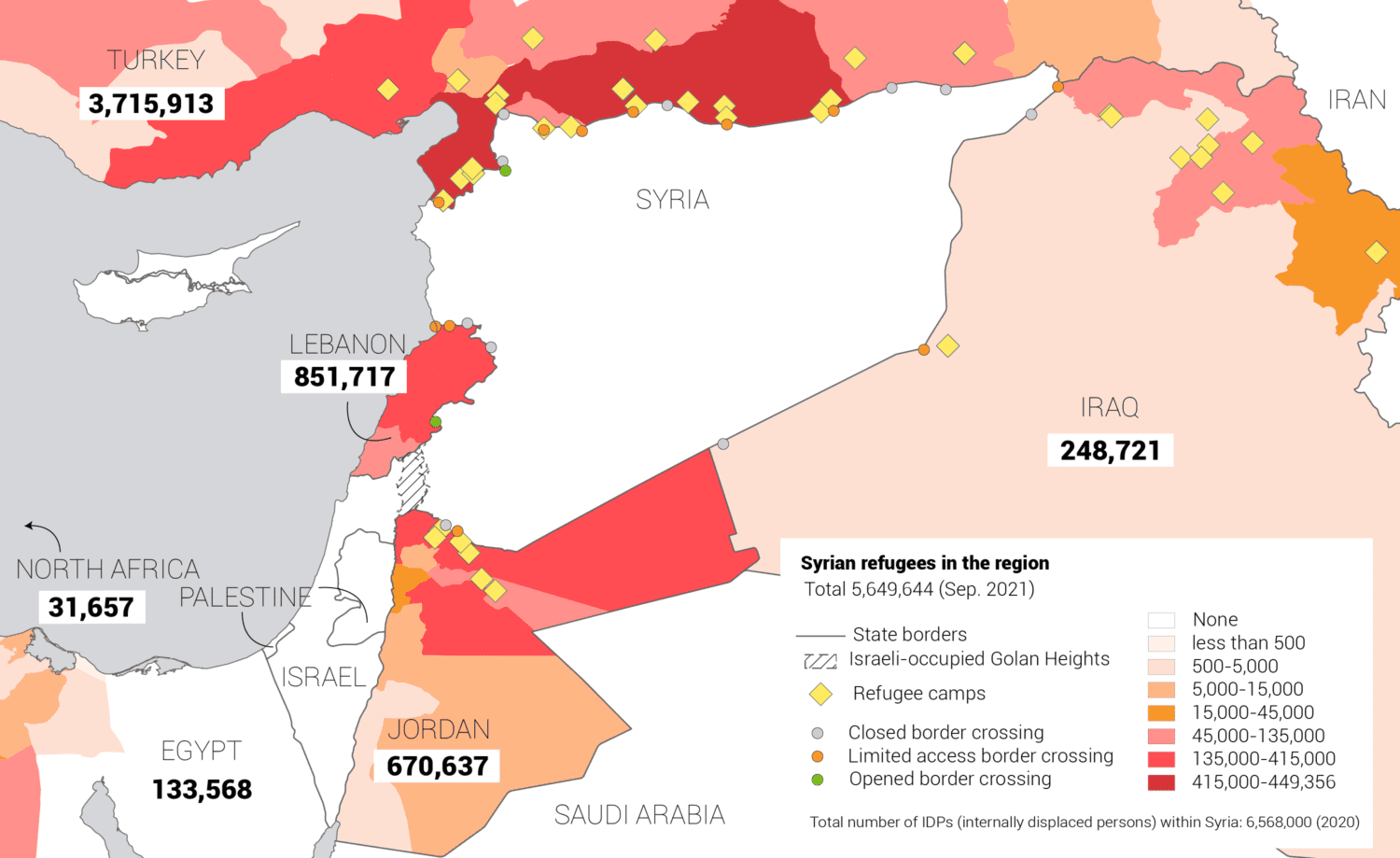Syrian refugees residing in countries neighbouring their homeland are marooned. They are stranded in countries suffering from economic and security crises, for which they are being blamed. However, returning to their home country means they are subject to security arrests or compulsory military service, not to mention the stifling economic crisis that the regime-controlled areas are going through.
In 2020, Syrian President Bashar al-Assad invited Syrian refugees to return to their country, thus opening the door to settling their security and recruitment conditions. However, most refugees do not trust the promises of the Assad regime, whose official media described the refugees who were recently subjected to racist attacks in Ankara as ” Erdogan’s Syrian mercenaries “. The media’s description clearly reveals the regime’s intentions for the refugees in the event of their return. For this reason, most residents in the countries of asylum neighbouring Syria prefer to endure the harshness of life, hoping and waiting for the lifeboat to take them to Europe, after the dream of al-Assad’s exit fades year after year.
In what follows, Fanack will give an overview of the most important trends in the Syrian refugee situation in Syria’s neighbouring countries. Alternatively, read more about how Syrians were forced to flee their country from the onset of the war until 2015.
Lebanon: the highest proportion of Syrian refugees
Lebanon has the highest proportion of Syrian refugees globally compared to the country’s area and a population of 6 million. By 2020, the number of Syrian refugees officially registered with the UNHCR in Lebanon reached 865,331 refugees. The number of Syrian refugees in Lebanon is estimated at 1.5 million, including nearly 600,000 refugees who live in tents set up in 2,800 informal settlements.
This high proportion of Syrian refugees in Lebanon is probably due to the two countries sharing geographical borders. In addition, there are dozens of common border crossings, including unofficial ones dedicated to smuggling goods, not to mention the fact that Syrians do not need an entry visa to Lebanon.

The consecutive security, economic and political crises in Lebanon have caused deterioration of living conditions, as the lira collapsed unprecedentedly. That accompanied a stampede of citizens in fuel and bread queues, a crazy increase in product prices and real estate rent, in addition to a rise in crime, theft and unemployment rates. Amid the failure of the Lebanese government to improve the deteriorating conditions, the Syrians have been blamed for the unemployment and the collapse of the economic and security situation. That has piled on the social suffering of the Syrians residing in Lebanon, as they face continuous bullying and racism. Adding to that is the economic hardship, as most Syrian refugees are forced to work long hours for low wages. Some municipalities even set a curfew for Syrians to roam the streets during the day. According to reports issued by Human Rights Watch, some cities have forcibly evicted thousands of refugees without legal basis.
The UNHCR in Lebanon advises Syrians not to return to their country in light of the prevailing conditions in Syria and to bear the harsh and oppressive conditions in which they are living. The authorities in Lebanon have adopted a new approach that complicated the procedures for obtaining residency even more for Syrians, exposing them to an increased risk of exploitation and abuse. This approach also limits refugees’ access to work, education, and health care.
According to Human Rights Watch, about half of refugee children in Lebanon do not have access to formal education. Child labour, poverty, school enrollment requirements, and transportation difficulties impede children’s enrollment in education. The Human Rights Watch report indicates that the troubles are compounded for children with disabilities and children of secondary school age.
According to a report issued by the UNDP, Syrians are forced to sign a pledge “to not work”, as part of the procedures for obtaining residency permits. This aggravates the difficulties that Syrians face in Lebanon. Here, it should be noted that this procedure is inconsistent with what was agreed upon following the London Conference on Syria in February 2016 to cancel some clauses preventing Syrians from working.
According to UNICEF, 17,706 Palestinian refugees from Syria are in Lebanon, 89% of whom suffer from destitution and extreme poverty. According to the report, they cannot meet their basic food and non-food needs set at US$ 6.84 per person per day. In addition to their economic problems, Palestinian refugees from Syria suffer from violence and racism even more than their Syrian brethren.
Jordan: More than half of Syrians live below the poverty line
According to the UNHCR in Jordan, most of the registered Syrians hail from southern Daraa governorate (39.9%), Homs (16.2%), Aleppo (11.4%) and Rif Dimashq (outskirts of Damascus) (11.3%). As of 2020, there are 702,506 refugees and 4,870 asylum seekers in Jordan, noting that 90% of Syrians live in Jordanian towns and cities and the rest in camps. There are five camps for Syrian refugees in Jordan, three of which are official, and the remaining two are temporary.

On the 4th of September 2021, tribal chiefs in the city of Daraa sent appeals to King Abdullah II of Jordan, asking him to either help stop their displacement from Syria or allow them to enter the kingdom. This came after the Syrian regime forces and Iranian militias imposed a suffocating siege on Daraa that lasted for several months. However, the Jordanian government did not respond to their appeal as it did not change the decision issued in 2019 to suspend the registration of people entering the country using a certain type of visa.
According to a report issued by the Peace Research Institute in Oslo (PRIO) in March 2021, more than half of the Syrians residing in Jordan live below the poverty line. The institute also clarified that the majority of Syrian families in Jordan receive some form of cash assistance, chiefly from the UN and other international NGOs. The report indicates that about 47% of Syrian families depend entirely or mainly on these cash transfers as a source of income. Notably, funding for refugee host countries such as Jordan is declining. Humanitarian assistance is expected to wane the longer the refugee crisis remains unresolved.
The PRIO report noted that with high unemployment and extreme poverty, families’ resilience is likely to be low. According to the same report, the Jordanian authorities cover only a small part of the needs of Syrian refugees, especially since the government’s priority is to mitigate the impact of the influx of Syrian refugees on Jordanian society.
Regarding the education of young refugees, the report indicated that nearly half of the Syrian refugees are under 15. The age group between 15 and 24 amounts to 16.6%. Refugee youth have a lower educational attainment than their Jordanian peers, and they drop out of school early. As such, young refugees have limited employment opportunities, which in turn may affect their educational persistence.
Like Turkey, Syrian teachers can work as volunteer teaching assistants in schools and receive a salary.
Based on the results of a recent survey conducted on youth in Jordan, the report by the PRIO predicted that labour force participation among Syrian youth in Jordan would decrease by 12.1% among those aged 15-24. Unemployment among refugees has added new dimensions to the unemployment crisis facing the country, which has implications on the future of young refugees, whether or not they remain in Jordan in the long term.
According to the report Jobs Make The Difference issued by the UNDP in 2017, employers in Jordan use various methods to circumvent sectoral quotas and restrictions imposed on Syrian refugees.
These methods include registering the workers in a different occupation. They are, for example, being hired as maintenance workers, despite working as computer programmers, or hiring fictitious Jordanians to work, allowing companies to employ Syrian refugees, or using cash-for-work programs that let Syrian refugees work without permits.
The United Nations Relief and Works Agency for Palestine Refugees in the Near East ( UNRWA ) reported that the irregular situation of Palestinian refugees from Syria in Jordan compounds their suffering. They face difficulties in civil procedures such as birth registration and official papers, which puts them at risk of forcible transfer to Syria.
UNRWA also notes that the vast majority of the more than 6,700 Palestinian refugees from Syria suffer from extreme poverty and are in dire need of housing and food.
Iraq: Aid programmes frozen
A report issued by the UN in 2021 indicated that the difficulties of life for Syrian refugees in Iraq increased with each passing year. As of 2021, there are about 250,000 Syrian refugees and asylum seekers in Iraq, living under very harsh living conditions. In December 2020, the Iraqi parliament rejected the draft asylum law designed to provide a legal structure for refugees and asylum seekers, which means continued suffering and chaos and the absence of clear frameworks defining the responsibilities of the Iraqi state towards refugees.

60% of refugee families have reduced their overall food consumption. These families have become dependent on accumulating debts, noting that about a third of these families live on humanitarian cash grants.
The UN report also stressed the critical importance of funding the emerging humanitarian and development needs. The list of necessities includes education for children and youth, cash aids for food, health care and clean water, in addition to life support and protection services for children and protection from gender-based violence. Here, it is necessary to note the decreasing availability of primary health care, especially reproductive care for women and girls, with the increasing risk of food insecurity in Iraq.
Despite the promises of the international community not to stop the aid provided to the Syrians, the government of Prime Minister Mustafa al-Kadhimi froze all humanitarian aid programs provided to thousands of Syrians during August, in conjunction with imposing more restrictions on Syrians, pushing them to return to Syria. That prompted thousands of Syrians to apply for a transfer to the Kurdistan Region of Iraq, hoping to live in more humane conditions.
In August 2019, the MERI institute issued a report which referred to the negative impact of the influx of Syrian refugees on health, education and employment sectors in the Kurdistan Region of Iraq, which also created economic, demographic and administrative challenges for the region.
According to the report, the local population initially warmly welcomed the Syrian refugees because most of them were Kurds. However, economic challenges and instability in the region changed this attitude. Syrian refugees in the Kurdistan region represent 97% of all Syrians residing in Iraq.
As for the identification papers that Syrian refugees hold in the Kurdistan region, the Syrian refugees are distributed within several camps in Erbil, Sulaymaniyah and Dohuk, according to Abdullah Yassen, a lecturer in public international law at the Erbil Polytechnic University. After the refugees from Iraq move to Kurdistan Region, the refugees are registered and allocated to tents, in conjunction with providing them with the basic services by the Kurdistan Regional Government (KRG), international agencies and NGOs. The KRG monitors these camps while the refugees obtain official identity papers and are granted temporary residence permits valid for one year, renewable annually.
Camp residents receive an asylum seeker certificate from the UNHCR after legally registering residence, which guarantees the refugee freedom of movement, work, education and access to health care.
According to a study conducted in 2018 by the Harmoon Center about the Educational Situation of Syrian Refugees in the Kurdistan Region of Iraq, the UN and humanitarian and relief organizations operating in the region have established schools (caravans) to accommodate children in the camps. These schools increased in number with the increase of refugees, students and their needs. UNESCO cooperated with the KRG to prepare students in camps for university studies. Three secondary schools were established as an initial step for establishing secondary schools in all camps, which started in Domiz, Darashakran and Korkosk camps.
According to the 2017 report issued by the UNDP, the programmes run by the Ministry of Labor and Social Affairs and NGOs include both the citizens of Iraqi Kurdistan and refugees.
Egypt: Syrian projects revive the Egyptian market
By December 31, 2020, the number of refugees and asylum-seekers registered with UNHCR in Egypt had reached 259,292 people, 50% of whom were Syrians.

KHALED DESOUKI / AFP
According to UNHCR, refugees and asylum seekers in Egypt live in urban areas, largely concentrated in Greater Cairo, Alexandria, Damietta and several cities on the northern coast. In recent years, the difficult economic conditions in Egypt have greatly increased the needs of refugees and members of the hosting community. With many refugees lacking a stable source of income and inflation rising, the basic needs of refugees are barely being met.
The cost of educating one Syrian child at the primary level is no less than 8,500 Egyptian pounds, between tuition fees, educational stationery, and transportation, a large sum for most Syrian refugees. UNHCR in Egypt is working to provide educational grants to families of refugees and asylum seekers most in need who have children enrolled in public schools and have applied for the grant.
During the academic year 2020/2021, the UNHCR provided educational grants to 43,910 students, in addition to grants to 1,513 unaccompanied or separated children. Scholarships were also provided to 368 children with special needs, who were supported by enrolling in specialized schools that meet their individual educational needs.
Egypt gives Syrians holding valid passports five types of residency, the first of which is a one-year study period obtained by students officially registered in universities or schools, which costs 650 pounds (US$ 43.3). Study accommodation allows its holders the freedom to travel and return. The student can also add his parents and siblings to his residence if they are under 18 years old. According to official statistics, the number of Syrian students enrolled in Egyptian schools is 42,300, in addition to 6,500 university students.
A Syrian can obtain a tourist residence that expires every 6 months, which costs 560 pounds (US$ 37). When holders of this visa leave Egypt, they can only return by obtaining a new entry visa.
The third type is the investor residency that can be obtained by starting a project with a capital starting from $35,000. A Syrian who purchased, with money obtained from outside Egypt, a property at a value exceeding $100,000 can obtain the residence permit. A Syrian who works for a legally registered company is also entitled to a one-year work permit. The period of marriage residency that a Syrian obtains when marrying an Egyptian ranges between three and five years.
The UNDP report confirmed that business projects established by Syrian refugees in Egypt contributed $800 million to the Egyptian market between 2011 and 2017. Syrian projects contribute to a large number of sectors such as textiles, restaurants, local markets and IT companies, noting that these projects employ large numbers of Egyptians, provide training for them, bring foreign currency and boost exports.
The report also indicated that despite the many difficulties, Egypt is among the major countries that attract the Syrian businessmen fleeing the war and wishing to set up projects.
The Syrian Businessmen Group in Egypt plays a key enabling role, providing guidance and advice to new Syrian business ventures. This is done by providing information on business rules and regulations, available industrial assets, and explaining market trends.
The report indicates that the Syrian Businessmen Group in Egypt uses its networks of relations among senior Egyptian government officials, as part of efforts to support new Syrian companies.
Syrian-run NGOs help meet the social needs of Syrians and provide services to them as they adjust to life in Egypt.
According to the report, many Syrian enterprises are thriving as they transfer capital, skills, and their business networks from Syria to Egypt without the direct involvement of either the government or development institutions.
The Syrian projects were able to occupy the untapped space in the existing industrial sector in Egypt, where they employ some local Egyptian workers alongside the Syrians themselves.
Despite the difficulties, UNHCR considers the asylum environment to be generally positive in Egypt.
According to the report of the Action Group for the Palestinians of Syria, the Palestinian-Syrians live in Egypt under unclear legal conditions because the Egyptian authorities refuse to grant Palestinian-Syrian refugees any residency, which increases their economic and social suffering. The same report indicates that about 3,000 Palestinian refugees have moved from Syria to Egypt since 2011.
Turkey: Temporary protection does not protect Syrians
Turkey and the European Union signed an agreement on March 18, 2016, aimed at curbing the flow of refugees, especially Syrians, to Europe. Under the agreement, “all illegal refugees passing through Turkey to the Greek islands will be returned to Turkey as of March 20, 2016”.

Yasin AKGUL / AFP
According to the UNHCR in Turkey, as of 2021 there are nearly 4 million refugees in Turkey, which makes Turkey the largest refugee host in the world. More than 98% of Syrians residing in Turkey live in cities and rural areas, while less than 2% of them live in 7 temporary shelters.
In an interview with the official Turkish Anadolu Agency, Selin Unal, the official spokeswoman for the UNHCR in Turkey, explained that the deteriorating economic conditions in the country have made the conditions of hundreds of thousands of Syrian refugees difficult. According to Unal, the number of refugees who are left without basic means of survival has increased dramatically.
The Turkish government provides the temporary protection document to Syrians and stateless people who came to Turkey after 2011. The Directorate General of Migration Management is the government entity responsible for all asylum procedures in Turkey, including the temporary protection system that guarantees a range of rights, health and education services, social assistance, psychological support, and access to the labour market.
A Syrian who has been granted temporary protection in Turkey is entitled to a work permit. To access the labour market and find job opportunities, UNHCR recommends registration with the Turkish Employment Agency İŞKUR.
According to Turkish national law, all children in Turkey, including foreigners (international protection applicants, refugees and those under temporary protection) are entitled to free primary and secondary education.
The temporary protection system provides a wide range of educational services, including early childhood education, schools (grades 1-12), higher education and non-formal education programmes. The range of educational services also includes Turkish language lessons and skills development courses offered by public education centres.
Despite the broad rights that the temporary protection is supposed to grant, most Syrians express their dissatisfaction with Turkey’s treatment of them as “guests” and not as refugees, especially since it does not only prevent them from obtaining their rights as refugees but also makes them vulnerable to racist attacks, whether by Turkish citizens or by the authorities who forcibly deported thousands of Syrians to Idlib.
Turkish official reports indicate that more than 2,400 Palestinian families have been displaced from Syria. According to the UNRWA, the plight of Palestinian refugees from Syria is getting more serious and difficult, especially since this organization cannot help Palestinian-Syrian refugees in Turkey because it does not have the mandate to operate there.
The number of Syrian refugees provided by the UNHCR conflict with those reported by governments in the host countries. Some host countries seek to use the refugee card in their domestic or foreign policies and employ the refugee file to obtain more aid from the UN.
But there is no doubt that behind these numbers lie stories and details of the suffering of individuals and families whose lives have changed and whose plans have radically transformed. Many of them are no longer able to support themselves and their families nor realize their dreams.


